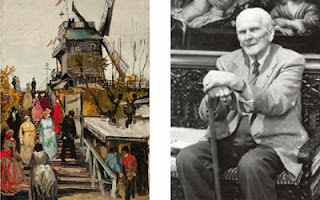Victoria Reed, Monica S. Adler Assistant Curator for Provenance at the Museum of Fine Arts, Boston, is speaking tonight at the Getty Center in Los Angeles on her work examining the ownership history of objects and the art-museum's policy and practice today.
Ms. Reed has been featured on the ARCA Blog previously: here in April 2011 as a panelist at a World War II Provenance Research Seminar; here in June 2011 regarding the MFA's settlement to keep Eglon van der Neer's painting, Portrait of a Man and a Woman; and here last summer in a post by Virginia Curry regarding a lecture to students at the Stonehill Art Symposium.


















.jpg)









